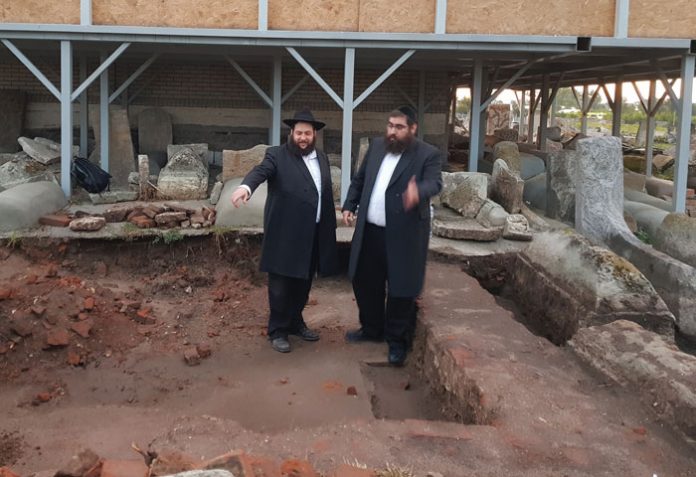It is estimated that over 100,000 Jews a year visit the gravesite of the revered Rav Levi Yitzchak of Berditchev, known by the name of his sefer, the Kedushas Levi, in Ukraine. Huge throngs of people pour their hearts out in prayer at the ohel, which was erected on what was believed to be the holy tzaddik’s resting place after the original ohel was destroyed during World War II. However, recent discoveries have raised questions about whether the current ohel was built directly above the Kedushas Levi’s tziyun after all.
The discovery was made by the rabbi of Berditchev, Rabbi Moshe Shmuel Thaler, who has undertaken the massive project of mapping and restoring the entire Jewish cemetery in the city.
Rabbi Thaler is a Chabad shaliach who was born in New York and raised in Israel. Fifteen years ago he assumed his post as rabbi of the Jewish community of Berditchev, a town that was once home to thousands of Jews but which now has only about 500 Russian Jews. For the past few summers, Rabbi Thaler has spent a lot of time looking for gravestones, marking their locations, and restoring some of them. During his searches he has discovered the resting places of some of the children of the Kedushas Levi.
One day, while surveying one area of the cemetery, Rabbi Thaler made a remarkable discovery. He says, “Every day in the summer, I look for graves in the cemetery in order to map them, part of my effort to reconstruct the cemetery. Usually this means that I clear away a top layer of accumulated dirt to find brick headstones. Once I find a headstone, I cement the area to mark that there is a kever there.
“I definitely was not looking for the original ohel. I didn’t know that any remnant of it still existed. But this time, when I hit a brick, something was different; it wasn’t like all the other brick headstones I’ve found. I tried to clear away the dirt to uncover where the headstone ended, but I saw that it was much longer than a regular headstone and just kept continuing. I then understood that this was not a grave. It was a wall.





















